Mississippi is home to a diverse population of game fish. Some are more familiar to anglers than others, but all of them can be a thrill to catch. To help you choose the perfect species, we’ve put together this complete fishing guide!
What are the best fish to catch in Mississippi this summer? It all depends on the type of angling challenge you’re looking for. First, consider your skill level, gear, and time available. Then find out what fish are going to be the most available, like the ones in the chart below:

Read on to discover the best fish to catch in Mississippi this summer.
1. Trout
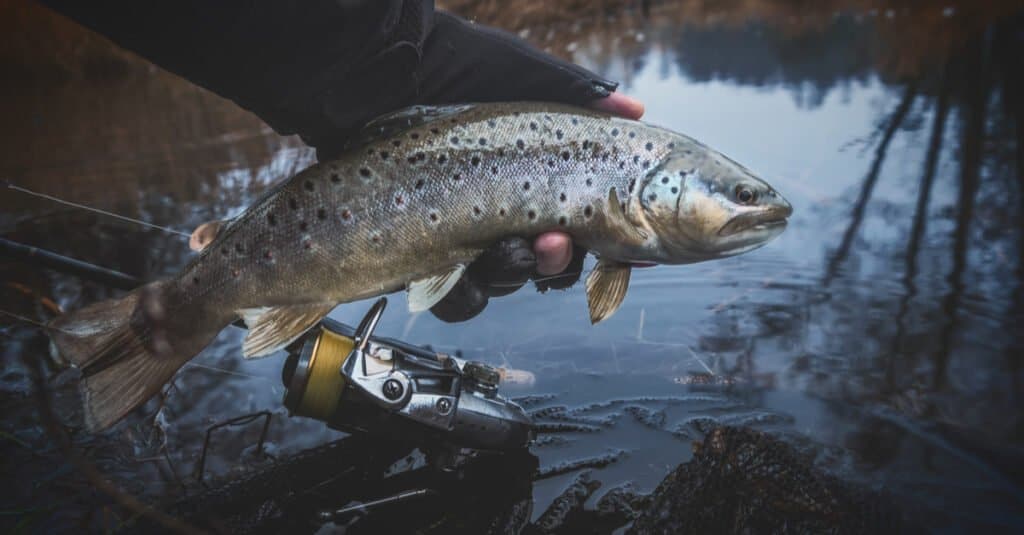
Brook trout are highly sought after by fishers because of their elusive nature.
©wwwarjag/Shutterstock.com
What type of trout should you target in Mississippi this summer? There are a few of them! Brooke, lake, and brown trout can be found throughout the Mississippi waterways. Each of these species presents its own unique challenges and awards.
For instance, brook trout are one of the most gorgeous game fish. They have brilliant spots of pink, purple, or red. These fish need cold, well-oxygenated, clear water to thrive. Their peak activity happens when the water temperatures range between the mid to high 50s. This is when they’ll be swimming around and looking for food.
Brown trout are more adaptable and can thrive in a variety of habitats. While the brown trout also enjoy well-oxygenated, cool bodies of water, they don’t care as much about water clarity. They can also tolerate all sorts of water temperatures. The brown trout’s ability to tolerate different temperatures makes them more accessible to anglers. These fish can grow to be between half a pound and 2 lb in size.
Finally, you should also try targeting lake trout. You’ll want to invest in a depth finder to catch a lot of these fish. Similar to salmon, trout enjoy cold waters with depths of 100 ft or more.
2. White Bass
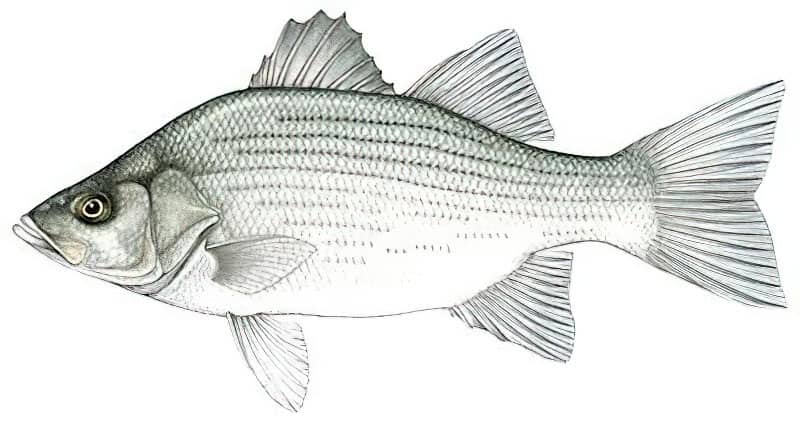
White bass have continuous dark stripes running down their sides.
©Mahler1780 / public domain – License
Sometimes referred to as silver bass and sand bass, white bass are a Mississippi favorite. These fish belong to the same bass family as the white perch, yellow bass, and striped bass. They have a silvery color with a tinge of yellow on their underside. White bass also has two dorsal fins that don’t completely connect. While they look like yellow bass, you can distinguish them thanks to their protruding lower jaws. They also have about 10 continuous dark stripes that run along their body length.
Luckily for anglers, white bass are a schooling fish. So once you catch one, you’re almost guaranteed to catch another. If you notice a sudden jump in fish size, a new school has likely entered the waters. White bass usually doesn’t live over 6 years, so they don’t reach behemoth sizes. The average size for a white bass would be around 2 to 3 lb.
3. Largemouth Bass
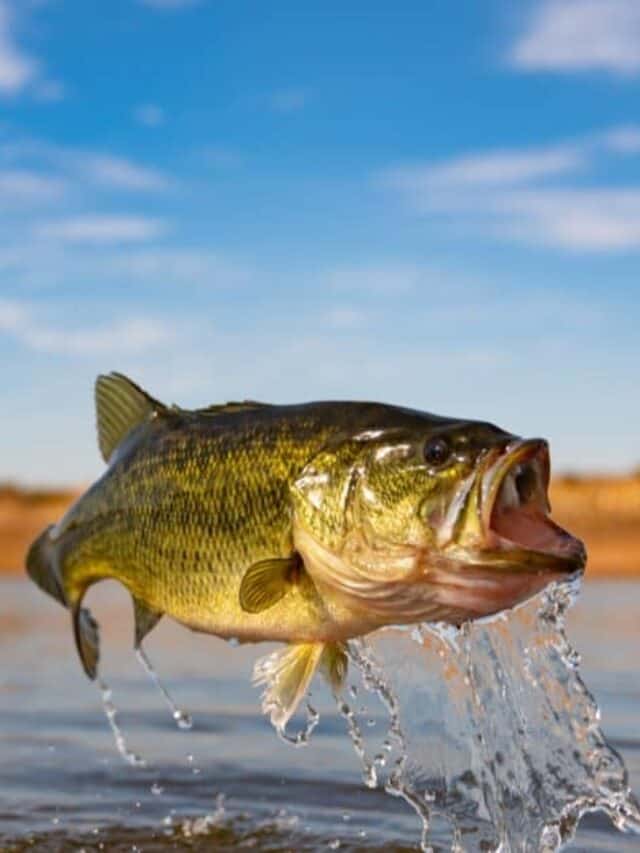
Largemouth Bass can be found from Minnesota to Florida and are an exciting game fish.
©Ryno Botha/Shutterstock.com
The largemouth bass get around! They have a native range stretching from Minnesota to Southern Quebec and from Texas to Florida. They’re one of Mississippi’s most exciting game fish, for a good reason. These fish are incredibly fun to catch and can grow to be quite big.
As a predator, largemouth bass are potent killers. Their body is laterally compressed, which helps them maneuver in tight areas. They’re known for making short bursts of movement when feeding to nab their prey.
Even though largemouth bass rely on their sight to attack prey, they also use a heightened sense of feeling. Similar to spotted bass, largemouth bass rely on their sense of feeling more than their sense of sight. Focusing your efforts during the early morning and evening hours will help you make more catches. The low-light conditions encourage peak feeding times, so the largemouth will be particularly active.
Between dusk and dawn, you’ll be able to find largemouth bass residing in shallow water. During the summer, during mid-day, plan on trolling the deeper waters.
4. Smallmouth Bass
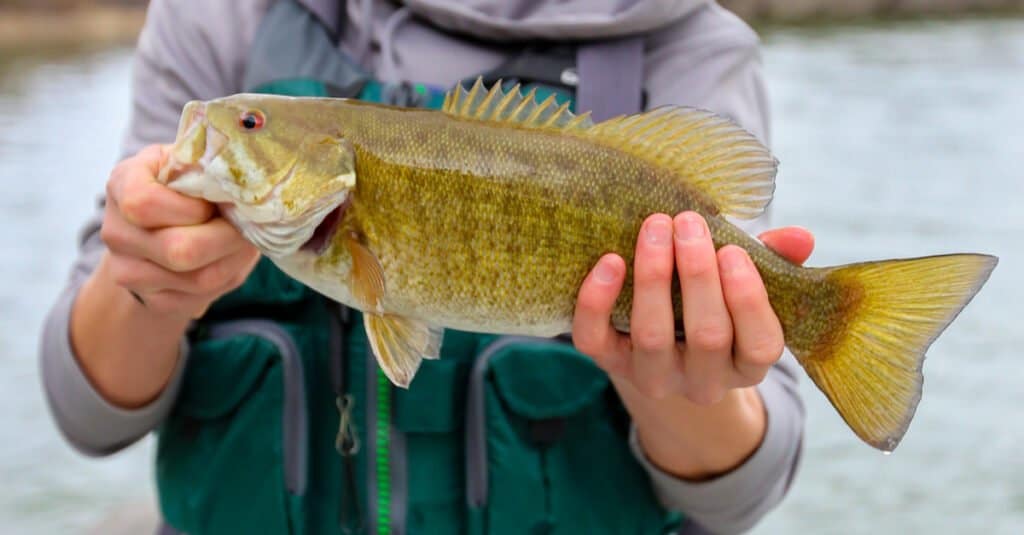
Smallmouth bass are among North America’s favorite gamefish.
©CSNafzger/Shutterstock.com
When you’re looking for smallmouth bass, rivers are a great place to start. You can start with the Tennessee River. You can find smallmouth bass in shallow streams that offer prime angling access.
Unlike the largemouth bass, you won’t find any smallmouth bass residing in Louisiana or Florida. However, they can be found in the Tennessee River and the Bear Creek water systems of Mississippi. These fish are efficient predators and are a favorite among anglers because of their aggressive nature. If you’re looking for a fish to fight, the smallmouth bass is a great species to target. They have an elongated laterally compact body with a golden-olive to dark brown color. But their colors can change to blend with their habitat; isn’t that amazing? They’ll have dark colors if they’re hiding around dark surroundings, such as rocks or submerged branches. If the smallmouth is in dirty water, they’ll have lighter and more yellow colors.
5. Bluegill
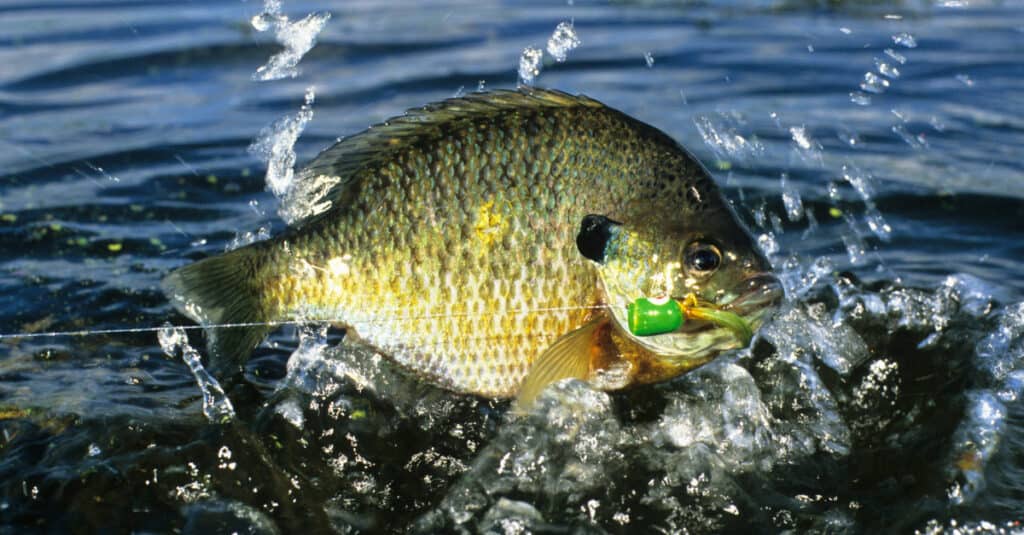
The bluegill is the largest sunfish in Mississippi.
©iStock.com/stammphoto
For many anglers, the first fish they’ll ever catch are sunfish. Why? These fish are easy to catch from shore. Take, for instance, bluegill and sunfish in Mississippi. North America’s most popular and widespread sunfish is the bluegill. Their name comes from their bright bluish head and gill cover.
Painted with a pallet of dramatic colors, some fish spawn in the spring or summer when the water temperatures are just right. The bluegill is the largest sunfish found in Mississippi and in all of North America.
On average, the bluegill weighs around half a pound. With the right combination of food, cover, and quality spawning grounds, bluegills can’t reach over 2 lb in size. Sometimes they spawn as many as three times during the summer months. The largest bluegill ever caught weighed 4 lb and 12 oz. The record belongs to T.S. Hudson, who was fishing at Katonah Lake, Alabama.
When fishing for bluegill in Mississippi, target weedy lakes, slow-moving streams, and the backwaters of rivers. For instance, in the Mississippi River, bluegills prefer backwater habitats. They don’t like the main or side channel areas. Finally, while you’re at the Mississippi River, keep an eye open for the adorable river otters and other mammals!
The photo featured at the top of this post is © iStock.com/stammphoto
Thank you for reading! Have some feedback for us? Contact the AZ Animals editorial team.






